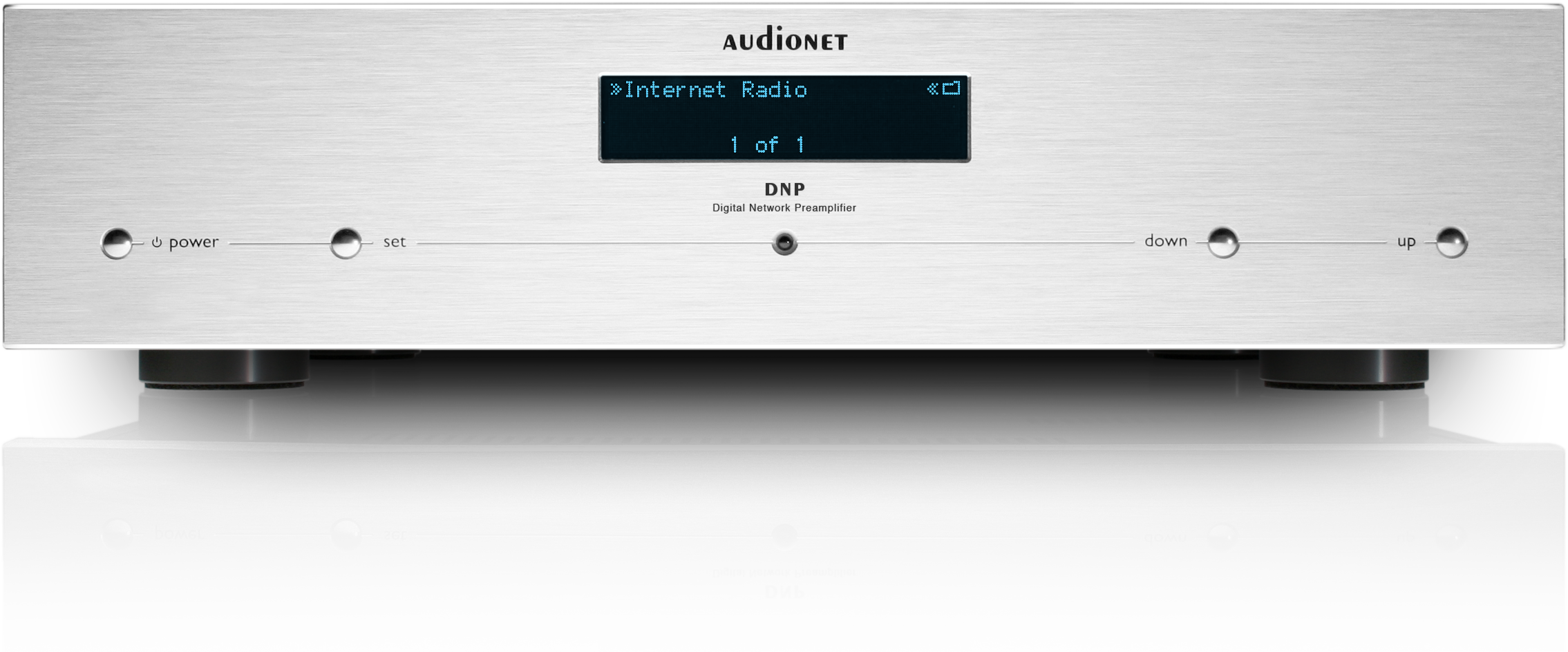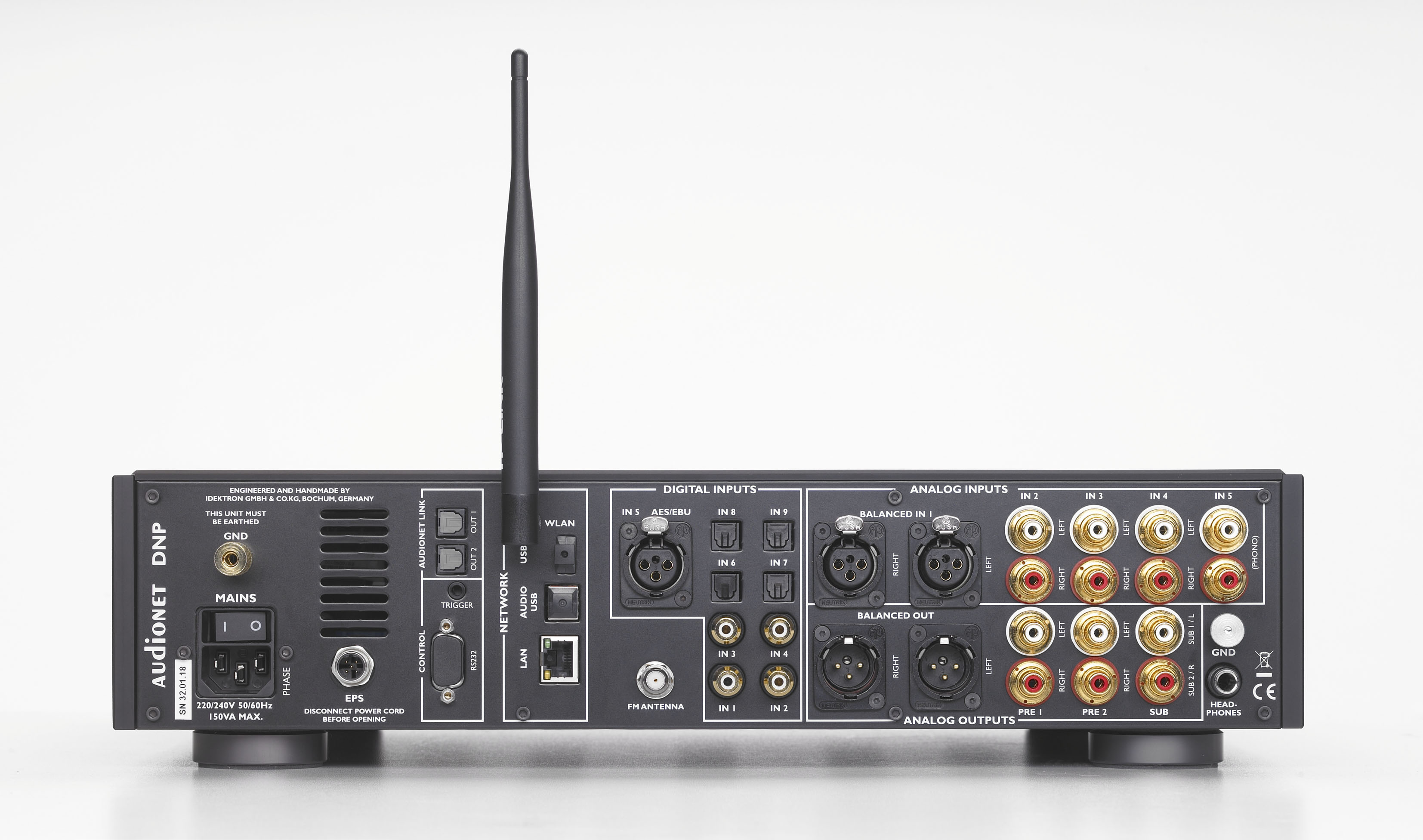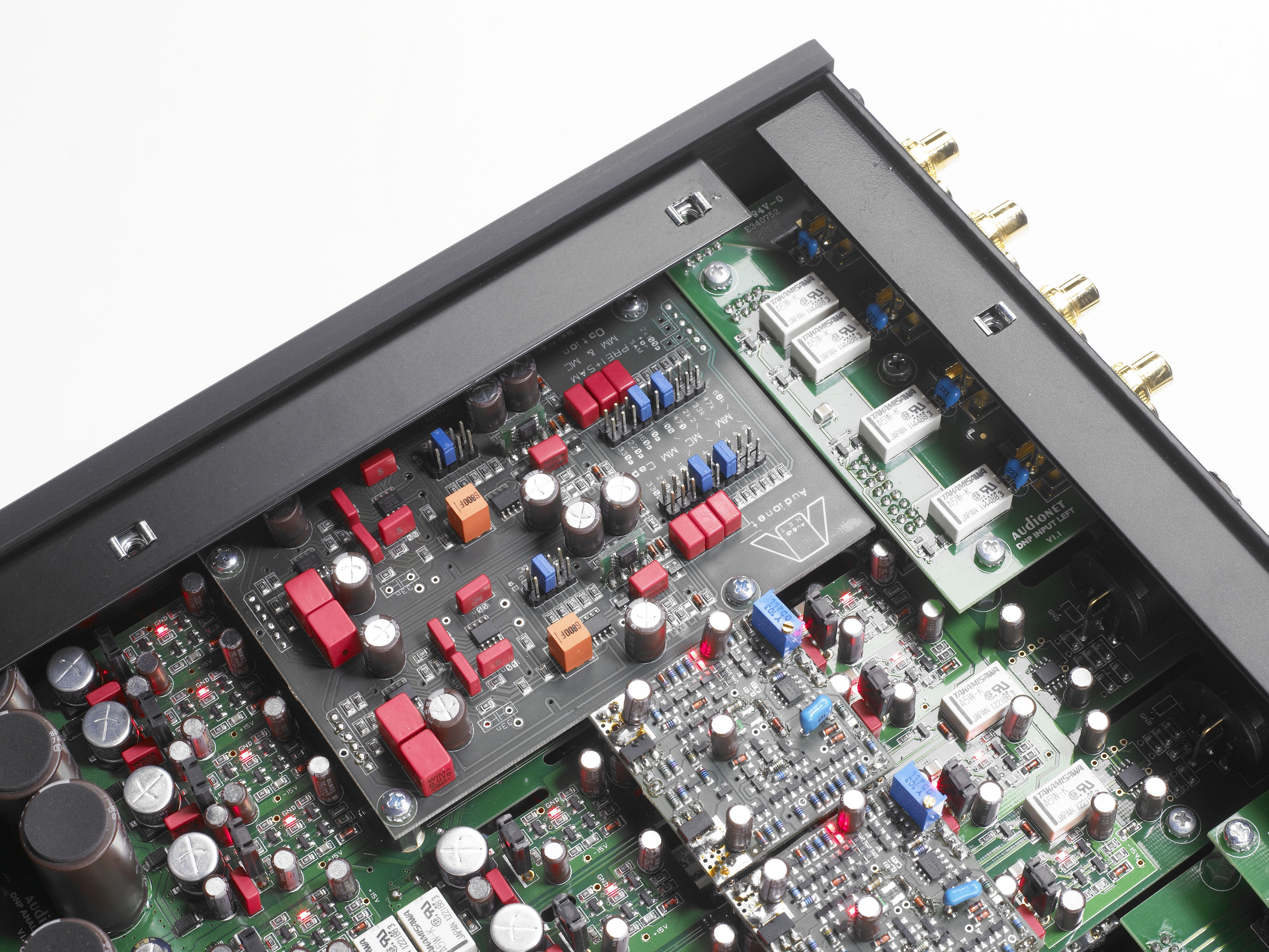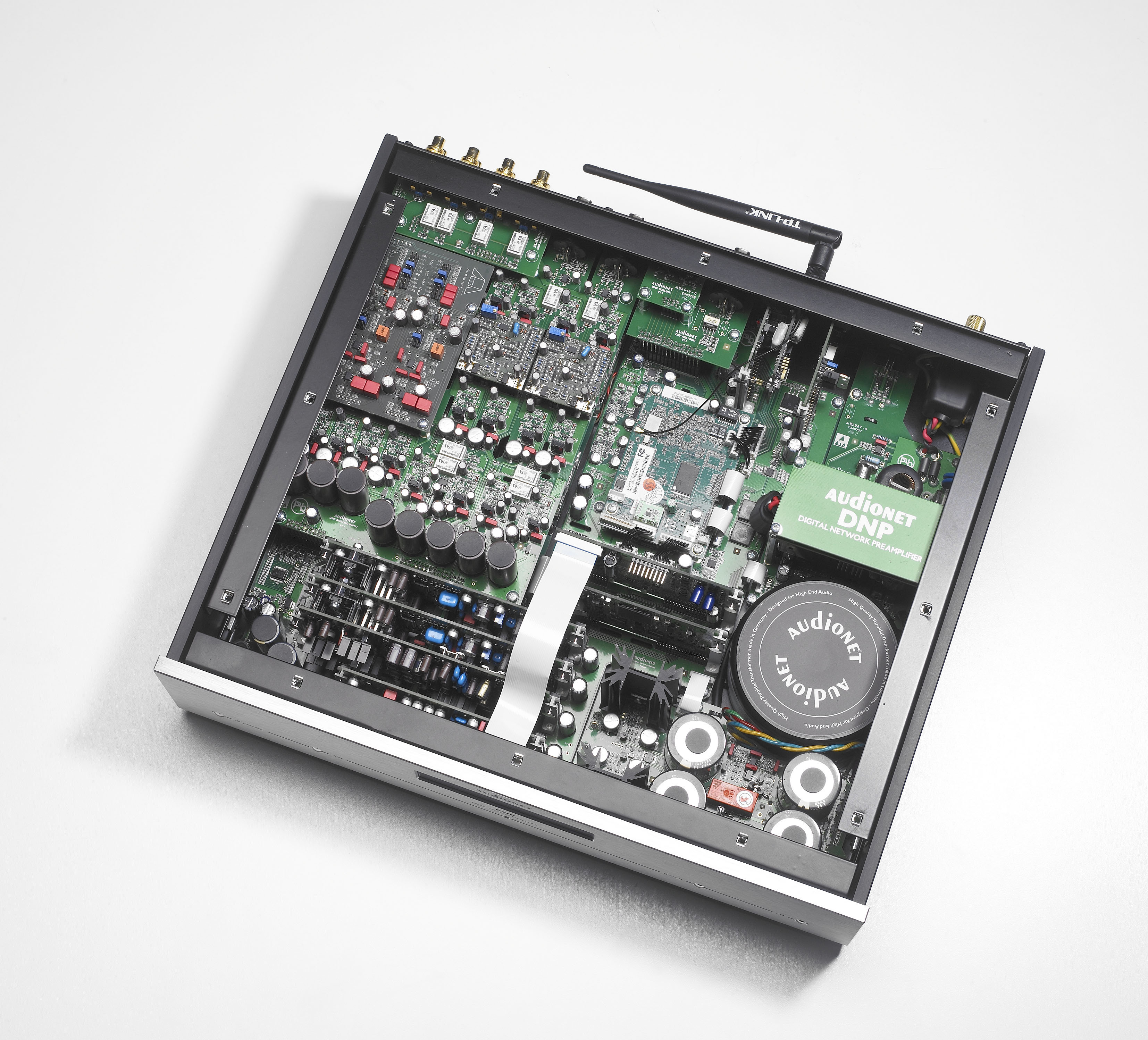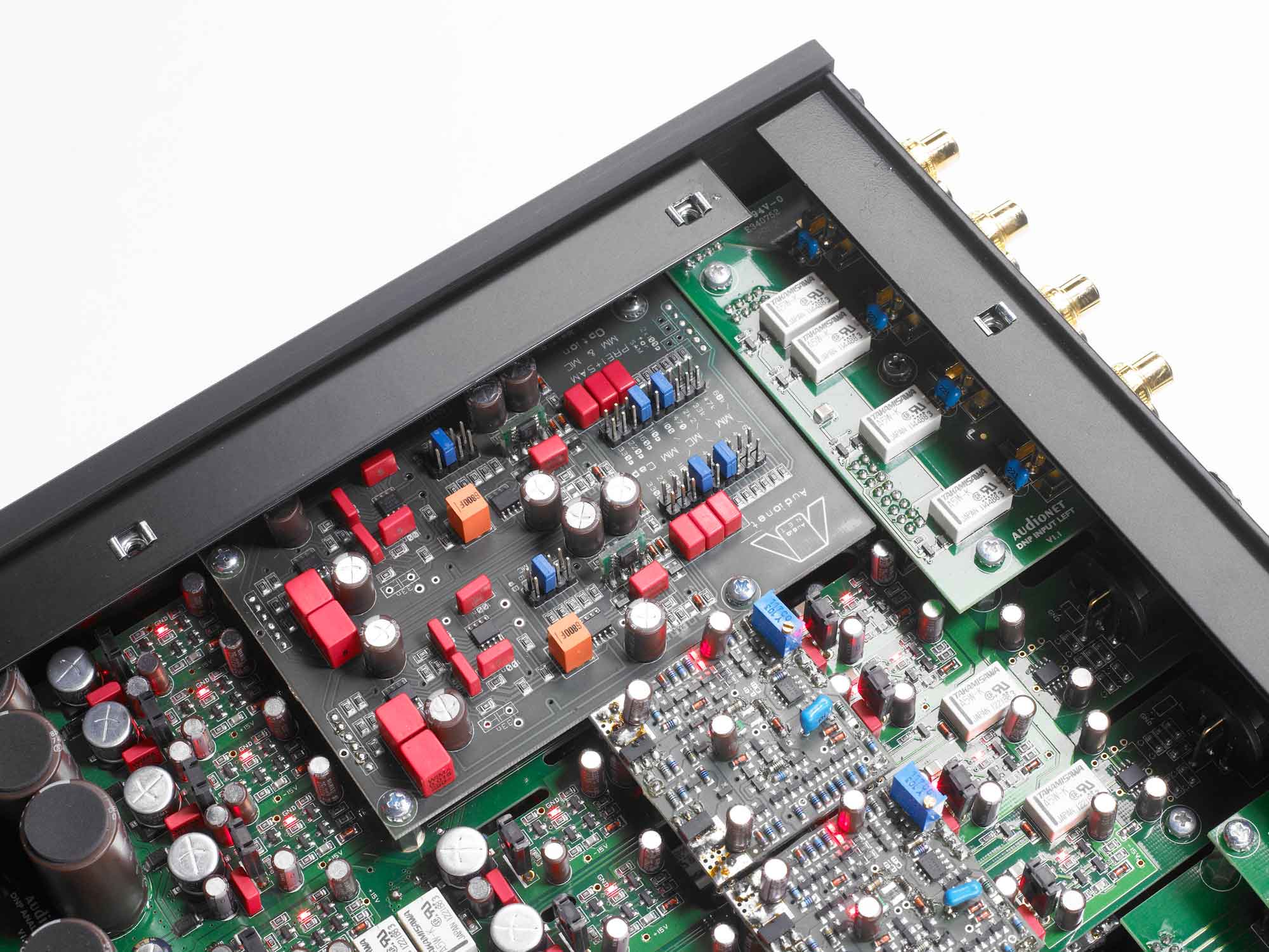- Product Infomation
|
|
- Product Detail
ConstructionThe DNP’s development and realization combines cutting edge circuit design with Audionet’s eighteen years of experience in digital and analogue technology. More than 5000 individual components ensure accurate signal processing. Isolated and autonomous power supplies for digital and analogue sections further reduce power source-related imperfections. High-performance processors working in combination with Audionet’s proprietary software for digital signal processing manage the digital signal processing of the Audionet DNP.
Equalizer, Delay- and Bass-ManagementThe DNP’s double precision bass management uses 48-bit resolution at all sampling frequencies, enabling the most accurate reproduction of even the lowest frequencies. The bass manager offers freely selectable cutoff frequencies, filter Q factors, and subwoofer phases; thus enabling integration of up to two subwoofers into the network, and are configurable into multi-room outputs. The digital parametric equalizer uses 5 Minimum Phase Equalizers (MPE), for main channel and subwoofer outputs. Each MPE is configurable in filter type, frequency, gain, and Q factor within an unusually wide adjustment range, allowing the effective optimization of all parameters and compensation of less than ideal room characteristics or acoustical problems. The delay manager allows for a range of up to 7 meters, automatically calculating delay times in relationship to the setup and speaker distances while allowing phase control of each subwoofer.
Signal Processing
First, the input data is filtered with Audionet’s proprietary software using a powerful signal processor and up sampled synchronously, through filters designed for optimal transient and frequency response. At the next stage, the optimized data is then resolved through an asynchronous up sampling procedure at 192kHz/24bit, allowing the complete isolation from any potential jitter originating from the input clock. The resulting audio data is then passed to two high-performance converters, which are clocked by dedicated ultra high precision quartz crystals and individually processed per channel into analogue signals. This method ensures that jitter faults are eliminated – completely lossless – in the analogue signal to the highest degree, resulting in unmatched clarity, room depth, and stage imaging. In addition, power flux interferences are avoided by powering the digital section of the Audionet DNP entirely separately from the analogue section. |
- Specification
Technical Data
|

|
